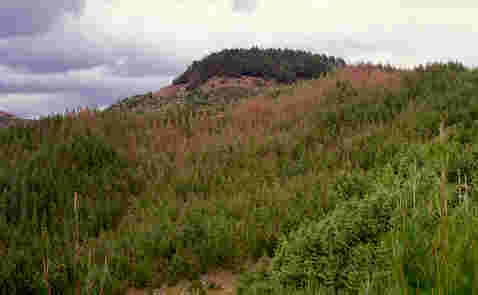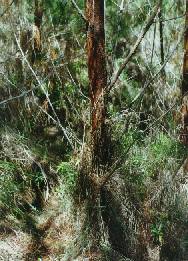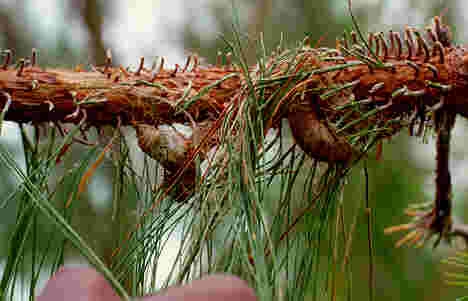The signs of a Lymantria infestation are quite conspicuous. Due to the peculiar feeding habit of the Lymantria larvae, the host looks always more or less defoliated and the needles pile up under the tree. When the caterpillars occur in large numbers there are not many needles left at the host, making it look grey from a distance. Trees of six years and older are mostly affected by the defoliator. In many cases an infestation starts on the ridge tops and proceeds further down to the valley, where the infestation usually comes to a halt. Coniferous trees are far more sensitive to defoliation than broad-leaved trees since it takes much longer for the needles to regrow. Therefore, a severe defoliation quite likely kills the host if an outbreak persists over several years. At the very least minor infestations result in a drastic decrease of diameter and height increment. Furthermore, the thus weakened trees are more susceptible to attacks by other secondary pests such as wood borers and fungi.
- severe defoliation of the attacked tree
- infestation of plantation usually starts from the ridge and proceeds downwards into the valley
- outbreaks occur periodically every ten to 20 years
- egg masses can be found on the bark below branches
- bundles of needles are cut off at their base and pile up under the tree





